The sport of cricket has successfully rebranded itself in the last half century in order to appeal to wider audiences. Now, instead of just having test cricket as the sole international format of the game, 50-over and 20-over cricket also exist! These shorter versions of cricket (also known as limited overs cricket) are attractive to many people because they don’t last as long as test cricket and they encourage both batters and bowlers to play in a much more attacking way. In these forms of cricket, there is a greater emphasis on playing innovative shots and scoring runs quickly – which is often very entertaining for fans at the ground as well as on TV.
When most fans turn up to watch limited overs cricket, they want to see lots of boundaries being hit and lots of runs being scored. The problem with this is that when fielding sides are faced with bowling to attacking players, they will often start to bowl very defensively and set defensive fields to stop batters scoring as quickly. Defensive approaches like this would reduce the number of runs being scored – which subtracts from the fan experience! To avoid fielding captains and bowlers adopting these defensive tactics, the ‘powerplay’ was created – and if you want to know exactly what these are and how they impact a game, you’ll want to read all of this post!
So, what is a powerplay in cricket?
A powerplay is a period during a limited overs cricket match in which the fielding captain is restricted from placing over a certain number of fielders outside of the 30-yard circle. The aim of a powerplay is to influence how easy it is for batters to score boundaries, and to make matches more entertaining as a result.
If you’re wondering what the 30-yard circle is, it is basically a marked out circular area which is much smaller than the full dimension of the field. You can see an example of it in light green in the diagram below! The 30-yard circle is also often referred to as the ‘inner ring’ by some players and commentators, so listen out for that the next time you’re watching a cricket match!

Different formats of cricket such as ODI’s and T20’s have different numbers of powerplays and they will often have slightly different rules. For example, there is only one powerplay period in a T20 match, but an ODI has three! In the sections below I’ll explain the powerplay rules for both ODI’s and T20’s, and we’ll look at some typical fielding positions and strategies you may see during these periods.
What Are The Powerplay Rules In ODI Matches?
ODI matches require each team to bat for a total of 50 overs whilst trying to outscore the opposing team. Within these 50 overs there are three separate powerplay periods, each consisting of slightly different rules. Let’s explore each of them below and see how they differ from each other…
Powerplay 1
The first powerplay in an ODI match lasts for the first ten overs (60 deliveries) of the innings. This is the most restrictive powerplay on the fielding team, because there is only a maximum of two fielders that are allowed to field outside the 30-yard circle. In this phase of the game you’ll usually see field placements that look like the ones in the diagram below!
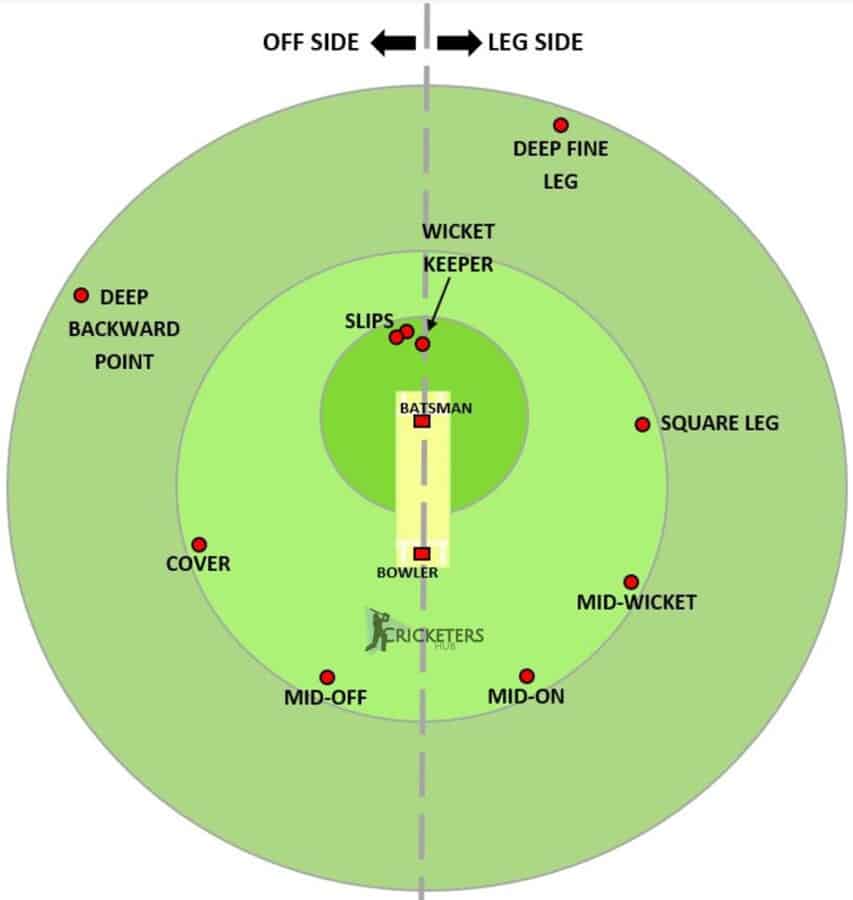
Because there are only two fielders that are allowed to field on the boundary during this phase of the game, the first powerplay gives the batters an excellent opportunity to get the innings off to a flying start by scoring at a very high run rate. If they can do this, they will put plenty of pressure on the bowlers and set a fantastic platform for the batters that are below them in the order.
The England ODI side from 2015 – 2019 had a reputation for playing in an ultra-aggressive way during the opening powerplay, and a large part of their success was built on this strategy. England primarily used Alex Hales, Jason Roy and Jonny Bairstow as opening batsmen during this period and all of them had good averages at very high strike rates and played multiple signature innings. Once they had got the innings off to a good start, the middle order players like Eoin Morgan, Ben Stokes and Jos Buttler could come in and play aggressively from the start of their innings without worrying about needing to rebuild.
The goal of the fielding team and the bowlers in the first powerplay should simply be to take as many wickets as possible. Taking wickets slows the batting side down and forces them to be more conservative. The first few overs of an ODI match are probably the only time that bowlers will be able to get the ball to swing and move off the seam, so it’s the perfect time to get some fielders in attacking positions such as the slips to take advantage of any mistakes from the batters.
Powerplay 2
The second ODI powerplay occurs between the beginning of the 11th over and the end of the 40th over, which means it lasts for 30 overs (or 180 balls) in total. During this phase of an ODI, there is a maximum of four fielders that are allowed to field outside the 30-yard circle. This provides the bowlers with a significant increase in protection compared to what they had to bowl to in the opening powerplay. A typical second powerplay field is shown below!
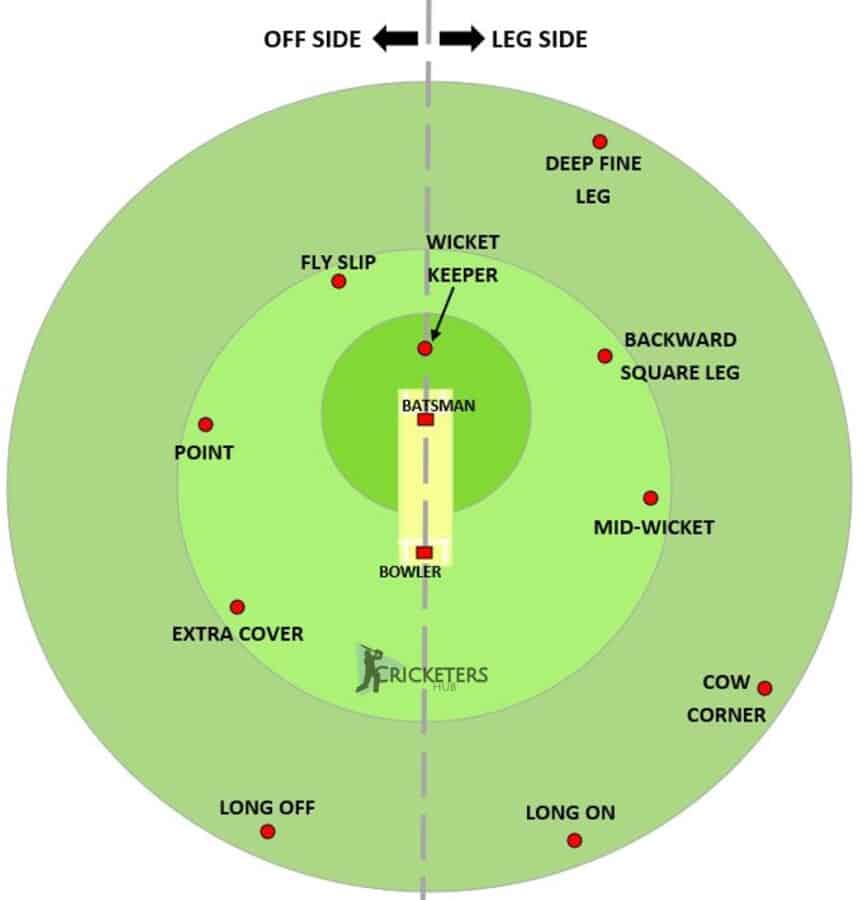
In the second powerplay boundaries are a lot harder to come by because of the extra fielders outside the 30-yard circle. Batters batting in this phase of the game will hope that they have had a good platform set for them during the first powerplay, and they’ll also have to bring out the creative side of their game in order to pick the gaps in the field. The second powerplay is where I feel that the 360-degree players like Jos Buttler or AB de Villiers really thrive, because they excel at hitting the ball in unusual areas. This makes it hard for fielding captains to cover all the angles – even with 4 fielders on the boundary!
From all of my years of watching ODI cricket, I’ve noticed that many bowling sides can allow the innings to drift in the second powerplay. They will often lose their focus on taking wickets, focusing instead on simply trying to limit the run rates. The problem with this is that if you don’t take wickets in the middle period of the innings, the batting side will have wickets in hand to go into an ultra-attacking mode much earlier.
The best bowling sides will have strike bowlers that excel in the middle overs. These are often either elite spin bowlers, or fast bowlers who really make it hard to score and can blow batters away with pure pace. Adam Zampa, Rashid Khan and Adil Rashid are three spin bowlers who perform this role well, taking wickets regularly and tricking batters with their variations. On the fast bowling front, Mark Wood and Pat Cummins are some of my favourite middle over operators. They always put batters on the back foot, which is what a bowling side should be aiming to do during this period.
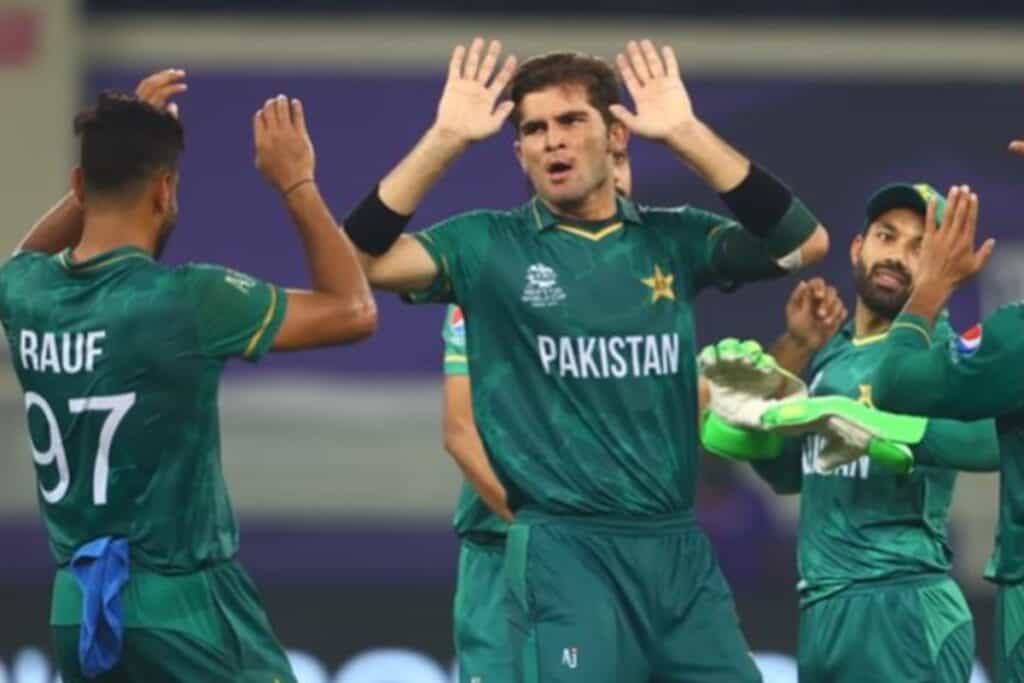
Powerplay 3
The third powerplay occurs during the last 10 overs of an ODI innings, meaning that it lasts for a total of 60 balls – just like the first powerplay! This powerplay can also often be referred to as ‘The Death Overs’, because these are the overs that occur at ‘The Death’ (or the end) of the innings. During this powerplay, a maximum of five fielders are allowed to field outside of the 30-yard circle. This is one extra than powerplay 2 and gives the bowlers a slight bit of extra protection whilst the batters are trying to up the scoring rate dramatically. A typical field during the third powerplay is shown in the diagram below!
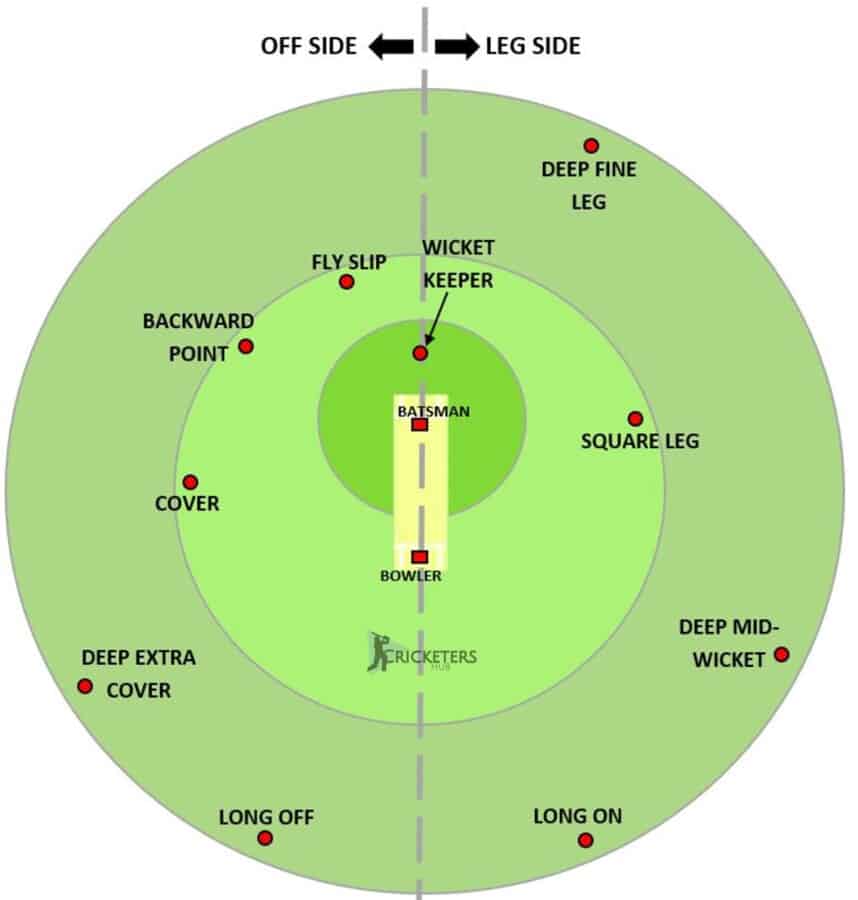
As I just mentioned, during this powerplay the main goal of a batter is usually to play in as much of an attacking manner as possible and to try and hit a large number of boundaries. If the fielding side has 5 fielders on the boundary, large scoring areas are going to be completely covered. Therefore, the batter will either have to play unorthodox shots and hit the ball in areas where the bowler is not anticipating, or alternatively they will need enough power to hit the ball over the heads of the boundary fielders.
Once again, the hardest batters to bowl to in this phase are the ones that are blessed with immense power but also a large range of shots, like Jos Buttler or AB de Villiers. Both of these players were capable of smashing the ball for 6 down the ground, but also using the ramp shot to hit the same delivery over the wicket keeper’s head. This ability to hit the same type of delivery to different parts of the ground makes them almost impossible to defend against.
In this powerplay bowlers will still be trying to limit the number of runs that batters can score against them. One of the best ways of doing this is by taking regular wickets! In terms of bowling strategy, the best death bowlers will mix up their lengths and the pace of their deliveries, ensuring that the batters can never pre-meditate and expect a certain type of ball to be delivered. If bowlers become too predictable in this phase, the batters will get themselves into position early so that they can smash the ball for 6 easily. Having good, accurate variations is a necessity!
Bowlers should also work with their captains to make sure that the fields they have set are suitable for their type of bowling. For example, if they going to bowl a mixture of quicker and slower balls into the middle of the pitch, the captain should make sure that there are a few fielders on the boundary square of the wicket on both sides as this is the most likely place for that type of ball to be hit. A bowler who is trying to bowl plenty of yorkers should have a lot of protection down the ground and perhaps a fielder at fine leg in case they get ramped!
What Are The Powerplay Rules In T20 Matches?
The powerplay rules in T20 cricket are actually a lot simpler than the ones in ODI cricket. In this format, there is only one powerplay, and it lasts for the first 6 overs of the match (36 balls). In this powerplay, there are a maximum of two fielders that are allowed to field outside the 30-yard circle. As you may have noticed, the rules for this powerplay are actually exactly the same as powerplay 1 in ODI cricket! As a result, you’ll see a lot of fields like the one shown in the diagram below in the powerplay of a T20 match.
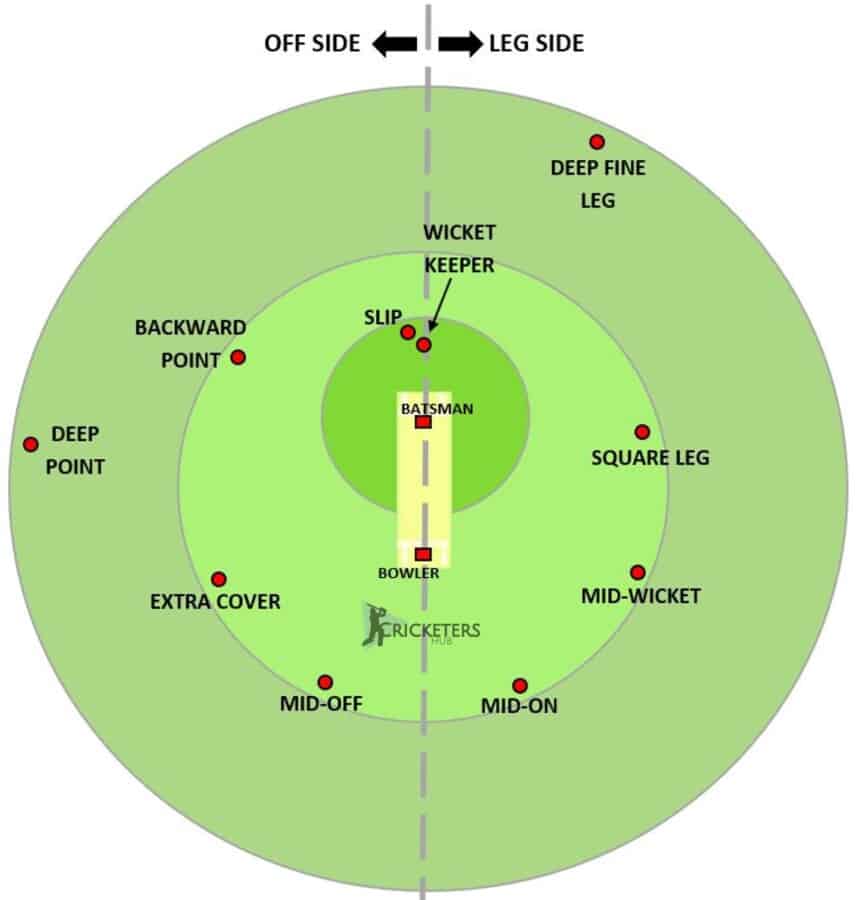
Once the 6th over of a T20 innings finishes and the 7th over begins, the T20 powerplay is over. For the rest of the innings, the fielding side is allowed to position a maximum of 5 fielders outside the 30-yard circle – which is exactly the same rule as powerplay 3 in an ODI match.
Because a T20 innings is much shorter than an ODI innings, batters tend to take more risks and play a much more aggressive game. This is why the fielding side is allowed to place five fielders on the boundary much earlier than they would be allowed to during an ODI.
If you’re looking for ideas of different types of fields to set in the powerplay of a T20 match, then I’ve written an in-depth post about that that you can read by clicking here! I’m also releasing a book soon which will contain hundreds of pages of ideas for different field placements in different scenarios in the different formats of cricket – so keep an eye out for that if it sounds interesting!
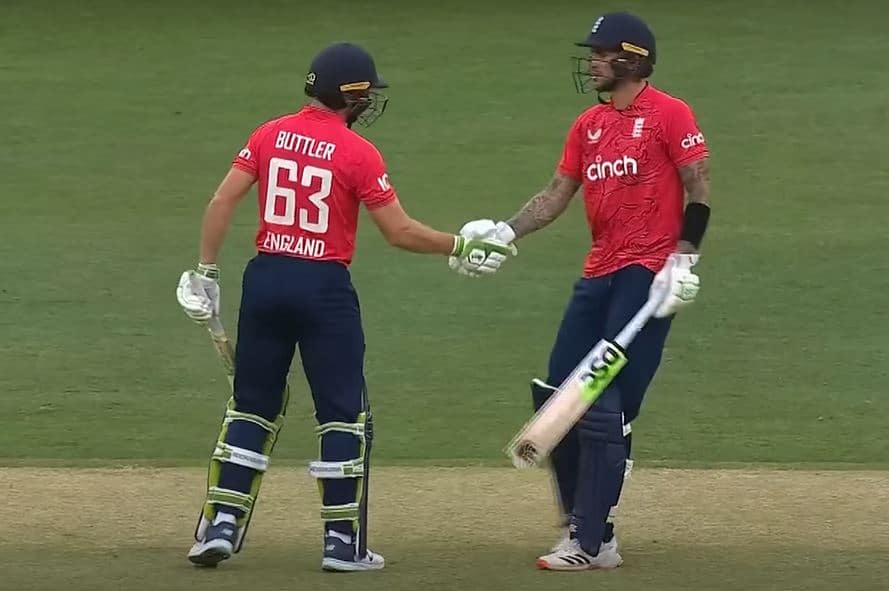
What Does P1, P2 & P3 Stand For In Cricket?
If you see ‘P1’, ‘P2’ or ‘P3’ on the screen during a cricket match, then you should be aware that this is referring to the powerplay that is currently active.
For example, if you’re watching an ODI match between India and Australia and somewhere on the scoreboard you see ‘P1’, you can instantly tell that the innings is still in the first powerplay and that only two fielders will be allowed outside of the 30-yard circle. Similarly, if you see ‘P3’ on the screen, you should know that the final powerplay is active and that the innings is drawing to a close!
Do Test Matches Have Powerplays?
No, test cricket does not feature powerplays. A batting innings in test cricket can last a lot longer than an innings in an ODI or a T20 match, and there is no fixed end to the innings. For example, a test match batting innings could last for 50 overs, 100 overs or even in excess of 150 overs. Therefore there would be no logical number of overs in which a powerplay could be applied.
In addition to that, the main goal of test cricket is not to have quick scoring rates and plenty of boundaries being hit. Test cricket relies on a different type of drama to draw in fans, and this is drama that slowly builds throughout the course of the 5 days. This is why there’s no real need for powerplays in the test match arena.
Conclusion
I hope this post has given you a solid explanation of what powerplays are and how they are used in T20’s and ODI’s. In the last 20 years there has actually been plenty of changes made to the powerplay rules in these formats, and it’s probably likely that we’ll see some in the future too! If there are any major changes coming, I’ll make sure this post gets updated!
Personally, I really like the current powerplay rules in both formats of the game, and think they offer great incentives to batters as well as bowlers. My favourite thing to watch in limited overs cricket is batters who can exploit the powerplays going up against elite wicket-taking and threatening bowlers. Any time England play a team like Pakistan or India, I’m always buzzing to watch our top order players like Bairstow and Buttler take on guys like Shaheen Afridi and Jasprit Bumrah!
Next time you’re watching an ODI or a T20 match, keep a look out for the powerplays and notice how the fielding captains change their field placings to different batters and when different bowlers are operating. For me, it’s one of the most fascinating things in the sport!
